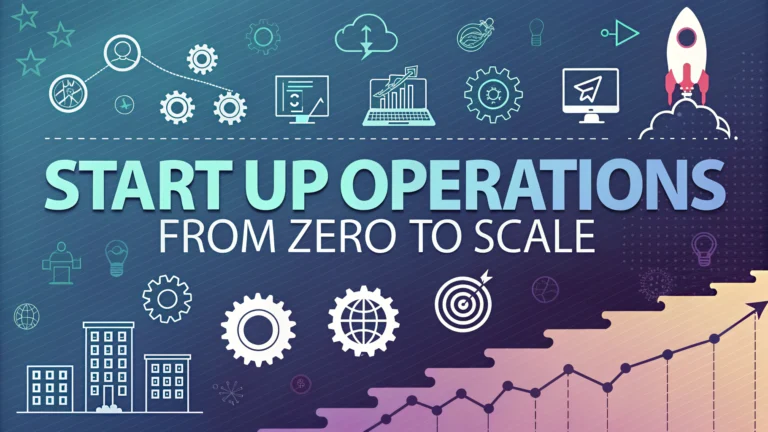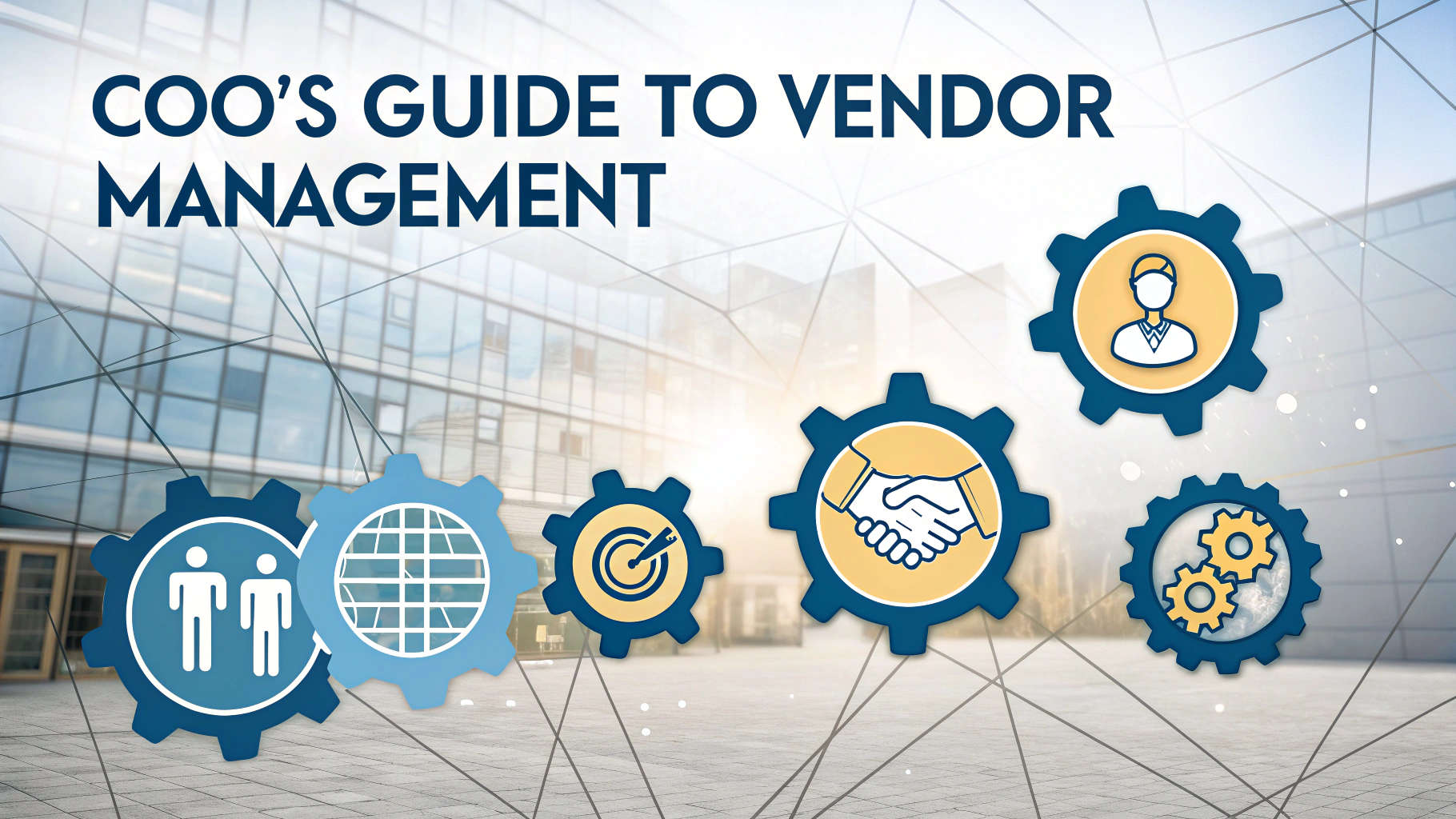Starting and scaling startup operations requires a systematic approach to building sustainable business processes.
A Chief Operating Officer’s primary role focuses on translating the company’s vision into executable strategies while maintaining operational efficiency.
This guide outlines practical steps and frameworks for establishing and scaling startup operations, based on real-world experience and proven methodologies.
Foundation: Setting Up Core Operations
- Document management system implementation
- Financial tracking and reporting tools
- Team communication platforms
- Project management software
- HR infrastructure
Key Operational Areas
| Area | Priority Actions |
|---|---|
| Finance | Cash flow management, budgeting, accounting setup |
| HR | Hiring processes, onboarding, culture development |
| Technology | Tech stack selection, security protocols |
| Legal | Compliance, contracts, IP protection |
Building Scalable Processes
Start with manual processes to understand workflows before implementing automation.
Create standard operating procedures (SOPs) for recurring tasks.
Implement measurement metrics for each operational area.
Team Structure and Growth
- Early Stage (1-10 employees): Focus on essential roles, cross-functional teams
- Growth Stage (11-50): Departmental structure, middle management
- Scale Stage (50+): Specialized teams, formal reporting lines
Technology Stack Selection
Choose tools that can scale with your business growth:
- Slack/Microsoft Teams for communication
- QuickBooks/Xero for accounting
- Workday/BambooHR for HR management
- Jira/Asana for project management
Risk Management and Compliance
Create a risk assessment matrix to identify and mitigate potential operational risks.
- Data security protocols
- Business continuity plans
- Regulatory compliance checklists
- Insurance coverage review
Performance Metrics
Track these essential KPIs:
- Customer Acquisition Cost (CAC)
- Monthly Recurring Revenue (MRR)
- Employee turnover rate
- Operating expenses
- Customer satisfaction scores
Next Steps for Growth
Review and adjust operational systems quarterly to ensure alignment with business goals.
Build relationships with key service providers and vendors for long-term partnerships.
Maintain flexibility in processes to adapt to market changes and new opportunities.
Contact professional COO networks like COO League or Chief Operating Officer Network for additional support and resources.
Operational Excellence Frameworks
Implement proven operational frameworks to standardize processes:
- Six Sigma for quality management
- Lean methodology for efficiency
- Agile principles for project delivery
- OKRs for goal setting and tracking
International Operations
Global Team Management
- Time zone coordination strategies
- Cross-cultural communication protocols
- Local compliance requirements
- Regional payment systems
Market Expansion
- Local market analysis
- Regional partnership development
- Localization requirements
- Cultural adaptation strategies
Cost Optimization
Develop systematic approaches to cost management:
| Area | Optimization Strategy |
|---|---|
| Infrastructure | Cloud services, shared services |
| Workforce | Remote work options, contractor mix |
| Operations | Process automation, vendor consolidation |
Driving Sustainable Growth
Focus on building resilient operational foundations that support long-term success:
- Establish feedback loops for continuous improvement
- Develop scalable leadership capabilities
- Create knowledge management systems
- Invest in team development and training
- Build strategic partnerships for growth
Remember that operational excellence is an ongoing journey, not a destination. Regular assessment and adaptation of systems and processes ensure continued alignment with business objectives and market demands.
Take advantage of industry networks, mentorship opportunities, and professional development resources to stay current with best practices and emerging operational trends.
FAQs
- What are the key responsibilities of a COO in a startup?
Managing day-to-day operations, developing operational strategies, overseeing team performance, implementing systems and processes, ensuring resource optimization, and working closely with the CEO to achieve company goals. - When is the right time for a startup to hire a COO?
When the company reaches 50-100 employees, experiences rapid growth, needs operational structure, or when the CEO needs to focus more on external matters like fundraising and strategic partnerships. - How does a startup COO differ from a COO in an established company?
Startup COOs typically wear multiple hats, are more hands-on, need to be adaptable to rapid changes, and often work with limited resources while building systems from scratch. - What key metrics should a startup COO track?
Unit economics, customer acquisition cost (CAC), lifetime value (LTV), burn rate, runway, operational efficiency metrics, employee productivity, and customer satisfaction scores. - How should a COO approach scaling operations in a startup?
By establishing scalable processes, implementing automation where possible, creating standard operating procedures, building cross-functional teams, and ensuring infrastructure can support growth. - What are the essential systems a startup COO needs to implement?
Project management tools, HR systems, financial tracking software, customer relationship management (CRM) platforms, communication tools, and performance monitoring systems. - How does a COO manage cash flow and resource allocation in a startup?
Through careful budgeting, prioritizing essential expenses, monitoring burn rate, implementing cost-control measures, and ensuring efficient resource utilization across departments. - How should a startup COO handle team scaling and culture?
By developing clear hiring processes, establishing training programs, creating career development paths, maintaining company culture during growth, and building effective communication channels. - What risk management strategies should a startup COO implement?
Creating contingency plans, implementing compliance measures, securing appropriate insurance, developing crisis management procedures, and establishing internal controls. - How does a COO balance growth with operational stability?
By maintaining sustainable growth rates, ensuring infrastructure can support expansion, implementing gradual scaling strategies, and monitoring key performance indicators.







